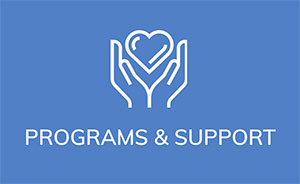Over the course of a year of monthly meetings, CLL Society Bloodline will teach the BASICS needed to understand CLL. It will also provide news, help with the acronyms and new vocabulary words, and offer simple fun quizzes.
MONTHLY QUIZ: Choose the correct statement below:
- CLL most commonly presents in men and in the elderly (around 70).
- CLL affects men and women equally.
- CLL is roughly equally common among all races and ethnicities.
ANSWER: The correct answer is #1. CLL is more common in men and the average age at diagnosis is about 70 and slowly getting younger. It is quite rare but can be seen in those under 30. About 10% present under 50 and 5% under 40. CLL is more common among Whites (5.1 cases per 100,000) than other races (Blacks: 3.2 cases per 100,000; Hispanics: 2.1 cases per 100,000; Asian Americans: 1.1 per 100,000). Ashkenazi Jews are especially at higher risk.
NEWS:
- New research shows in active surveillance (Watch and Wait) those low in Vitamin D who take replacement have improved progression free survival, making this the 1st early intervention that helps. This doesn’t mean taking extra Vit. D other times helps.
- Join us on Monday, June 3rd, for our upcoming webinar Treatment for CLL: When is the Right Time to Start? with Nurse Practitioner Laura Zitella and Stephen Feldman.
- Join us on Tuesday, June 4th, for CLL Society’s ASCO 2024 X Spaces event with Drs. Matthew Davids, Alan Skarbnik, Adam Kittai, Chadi Nabhan and our own Brian Koffman. You must be on X (Twitter) to listen to the event live, but everyone can catch the replay on-demand.
- CLL Society has opened two interest surveys for new support groups. If you are interested in participating in either support group, please complete the survey: Care Partner of a CLL / SLL Patient Support Group or CLL / SLL Patients Without a Care Partner Support Group.
- If you are speaking as a CLL / SLL patient advocate or care partner, please let Liza Avruch know at [email protected].
THE BASICS: Watch and Wait or Active Surveillance
The first treatment for about 95% of CLL patients is “Watch and Wait,” or as we prefer to call it “Active Observation” or “Active Surveillance.” We are working to change the term in order to suggest a more active approach. Patients often still call it, “Watch and Worry.” It is at first glance one of the most counter-intuitive concepts in CLL. With many types of cancer, early detection is critical with the prognosis getting worse with more advanced stages of the disease. That’s the reason for routine PAP smears, mammograms, colonoscopies, PSA, and skin check – catch the cancer early. In CLL / SLL, it’s a different story because:
- No early treatment strategy has been shown to prolong survival.
- All treatments have some risks.
- 30% of patients will never need treatment so treating early exposes them to unnecessary toxicities.
Outside of a clinical trial, “Active Surveillance” or “Watch and Wait” is still the smart move. If you are interested in early intervention, the EVOLVE trial is now open using venetoclax and obinutuzumab early in high-risk patients before they meet the usual criteria for treatment.
WORD/ACRONYM OF THE MONTH: FLOW CYTOMETRY
Flow Cytometry is a powerful blood test that looks at markers on the cell surface. It is THE test necessary to confirm the diagnosis of CLL by identifying the typical clonal population of cells (CD19, CD20(dim), CD23 and CD5). It can also be used to look for MRD (measurable or minimal residual disease) and is able to find to 1 cancer cell in 10,000 cells.
If the CLL Society has helped you or a loved one, please consider making a donation.

















